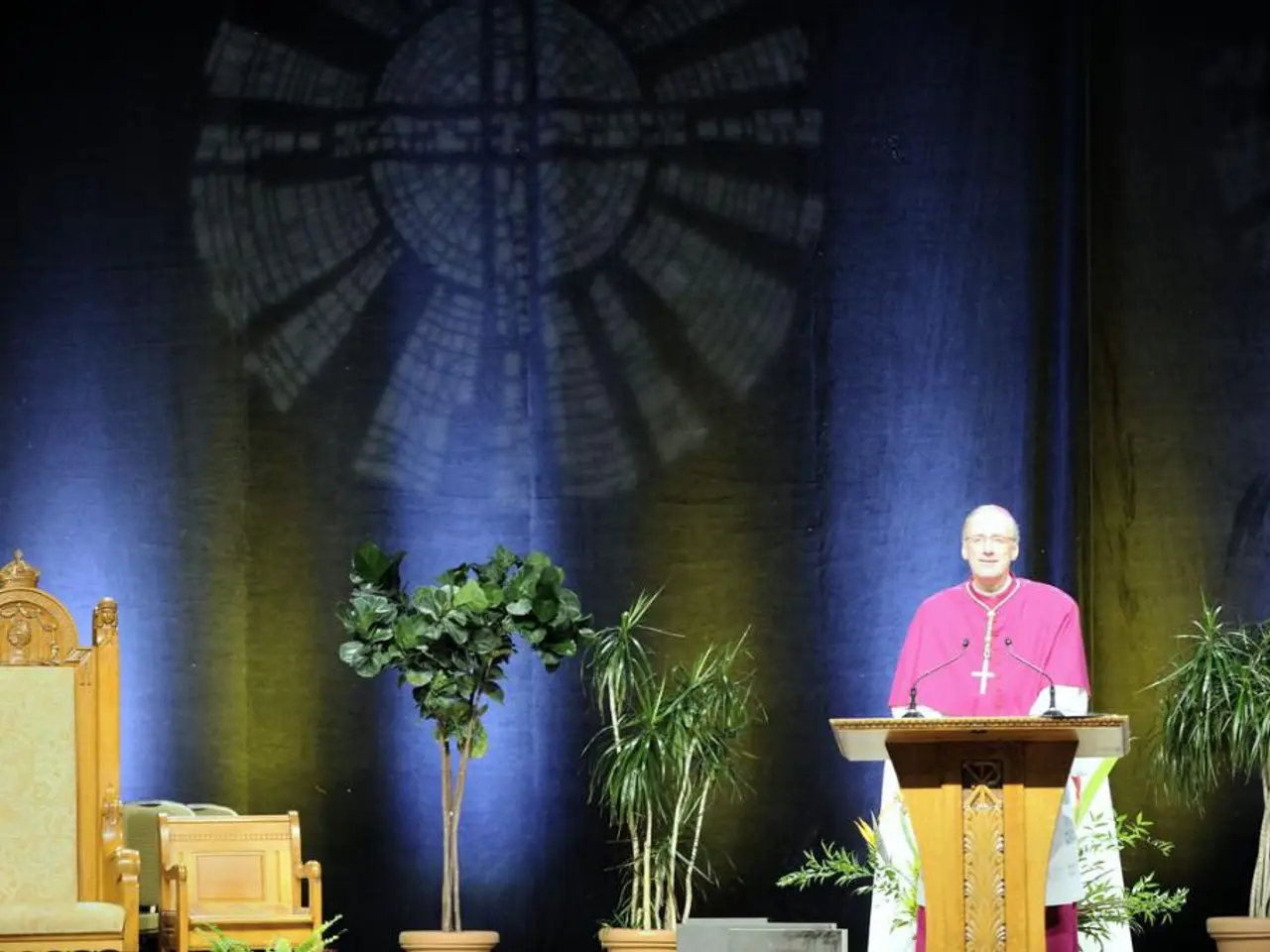Conflict between factions post-Revolution leadership, specifically highlighting Stalin's influence during that period
In the tumultuous aftermath of the Russian October Revolution, the governments of England and France made a strategic move that would have far-reaching implications. Rather than establishing their embassies in Moscow, the seat of the new Soviet government, they chose to relocate them to Vologda, a city four hundred kilometers northeast of the Russian capital.
This deliberate act was a clear indication of a strained diplomatic relationship with the Soviet power. The new location of the embassies was Vologda, a city situated at a distance of approximately four hundred kilometers from Moscow.
The reasons behind this decision are believed to be rooted in the governments' stance towards the new Soviet government. By choosing Vologda, they may have signalled a reluctance to engage directly with the new regime, potentially reflecting a more cautious approach to the emerging Soviet state.
Meanwhile, Imperial Germany initiated a foreign intervention in Russia's internal affairs during the 'Civil War.' Germany waged an undeclared war against the revolution, mirroring its aid to the counter-revolution during the Paris Commune of 1871. The goal was to strangle the revolution and restore the old tsarist regime, turning Russia into a semi-colony.
In addition to Imperial Germany, other countries also intervened in Russia's internal affairs during the Civil War. These included France, Japan, the United Kingdom, the United States, and several other countries that contributed forces or support. While the exact list varies slightly by source, the commonly recognised intervening states beyond Imperial Germany include France, Japan, the United Kingdom, the United States, Canada, Italy, Romania, Poland, Czechoslovakia, Serbia, Greece, China, and Latvia.
These countries either sent military forces, supplies, or political support to various White factions or intervened to secure their own strategic interests during the conflict. Allied countries, including France, intervened on a relatively small scale with about 200,000 soldiers total, primarily aiming to combat Bolshevik forces and support anti-Bolshevik groups.
In Vologda, the embassies of England and France remained distant from the heart of the revolution, serving as a reminder of the complex diplomatic landscape that characterized the early days of the Soviet Union. Despite their strategic placement, these embassies would play a role in the unfolding events, acting as a bridge between the old world and the new, and a testament to the shifting alliances and tensions of the time.
The strategic placement of the embassies of England and France in Vologda, a city distant from the heart of the revolution, was a clear indication of the complex diplomatic landscape that characterized the early days of the Soviet Union. This deliberate act, coupled with the foreign interventions during the Civil War by countries like France, Japan, the United Kingdom, the United States, and others, reflected a strained relationship with the new Soviet government and served as a testament to the shifting alliances and tensions of the time amidst the backdrop of war-and-conflicts and politics.







